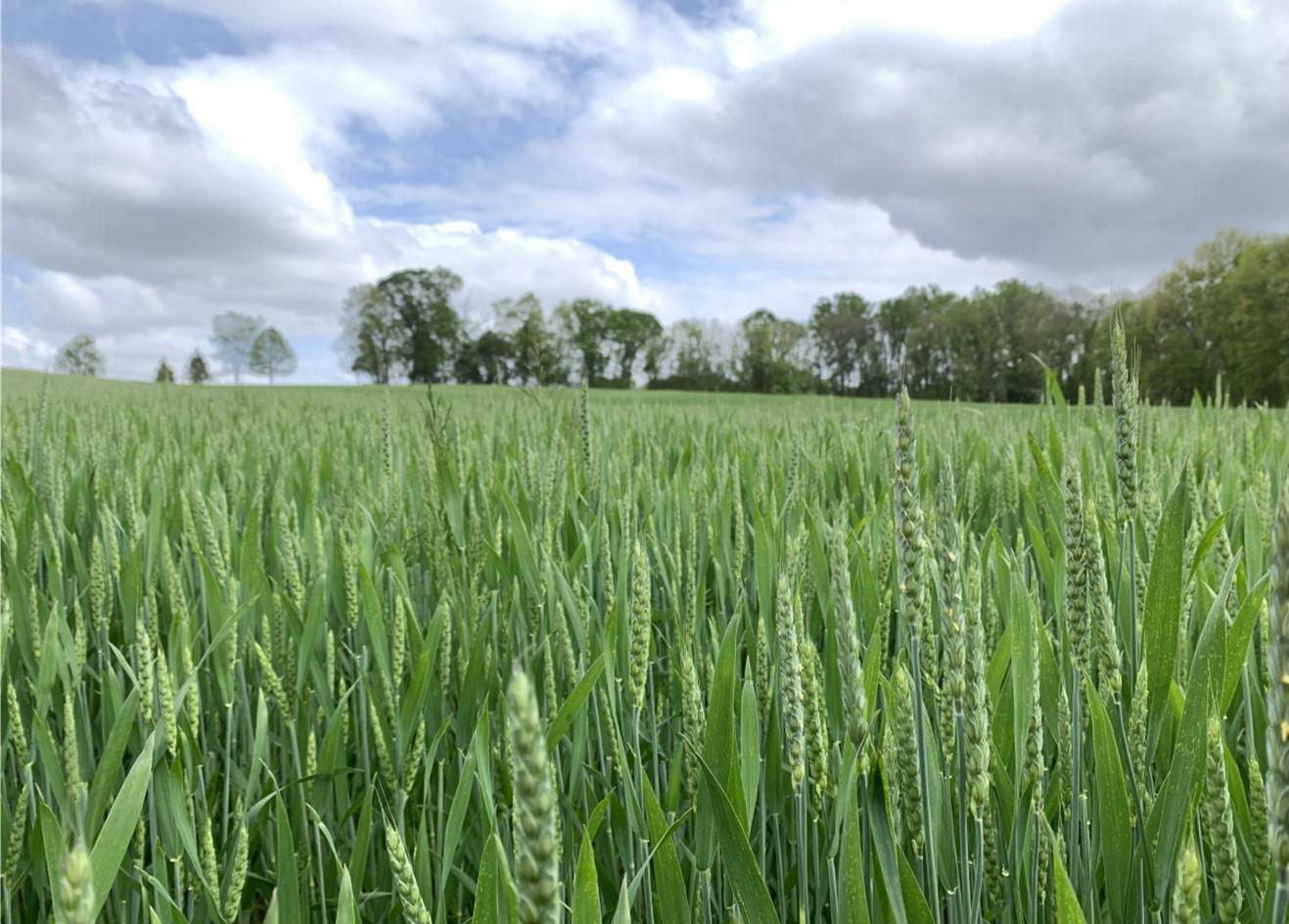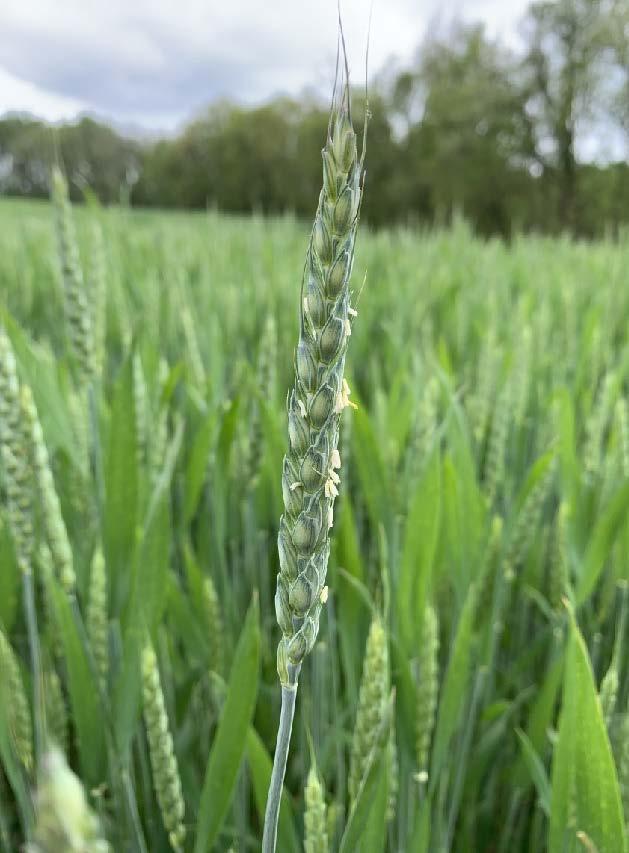
Overview of Fungicides for Head Scab Control in Wheat

This article may come a little too late for some of you depending where you are in the state; but nevertheless, here is a review/reminder. As we get into May, wheat will begin flowering and we will have to consider fungicide applications to wheat to manage Fusarium head blight (FHB), also known as head scab. FHB is the most economically important disease of wheat, causing not only yield reductions, but more seriously, grain quality issues due to the production of the mycotoxin deoxynivalenol (DON), also called vomitoxin.
The pathogen that causes FHB, Fusarium graminearum, persists in wheat, small grain, and corn residue. It infects the wheat plant through the open flower, which is why flowering is such an important management timing for quality wheat production. Fusarium graminearum requires moist conditions and moderate temperatures (59-86 °F) to initiate infection. If these conditions are met during flowering, the pathogen will infect susceptible wheat varieties and cause disease.
Management of FHB requires a layered approach of IPM practices, with the major management practices being the selection of a good wheat variety and subsequent good planting and fertility practices, plus the use of a fungicide at flowering should the environmental conditions be conducive for FHB development. The wheatscab.psu.edu map can be helpful in predicting FHB risk to wheat around flowering. Historically, this model has been over 70% effective at predicting FHB outbreaks and should be consulted when making fungicide decisions. If you decide to apply a fungicide to manage FHB, there are three important factors to consider: 1.) Timing, 2.) Application method, and 3.) Active ingredient.
As mentioned earlier, the pathogen can only infect wheat through the open flower, so you need to time your fungicide application as close to flowering, or Feekes Growth Stage 10.5.1, as possible (Figure 1). This growth stage is defined by the appearance of yellow anthers in the center of the wheat spike on at least 50% of the plants. Once this stage is reached, the application window is about 5-7 days. Some fungicide products are labelled for application as early as Feekes 10.3 (half head emergence); however, this timing is not as optimal as 10.5.1—so wait if you can.
The second factor is application method. Most of our fungicides on wheat go on with a ground sprayer. For ground applications it is important to achieve good coverage of the wheat heads, not the foliage. To do this, spray volumes should be at least 15-20 gallons/acre and you should use bi-directional spray nozzles angled forward and backwards. This combination of spray volume and angled nozzles results in thorough coverage of the wheat heads. Aerial applications should be done at 5 gallons/acre for maximum coverage.
The final consideration is fungicide active ingredient. Triazole and HDMI fungicides work best on FHB. Products include: Prosaro Pro, Prosaro, Miravis Ace, Saphaerex, Proline, and Caramba; Folicur has less efficacy than the others and Tilt is no longer effective on FHB. An added benefit is that these products will also do a good job of keeping other fungal diseases at bay during grain fill. Do not apply any group 11 (Qoi/strobilurin) fungicides such as Aproach, Headline, or Quadris after heading as these products can actually increase DON levels in the grain.
This article appears in May 2024, Volume 15, Issue 2 of the Agronomy News.
Agronomy News, May 2024, Vol. 15, Issue 2
Agronomy News is a statewide newsletter for farmers, consultants, researchers, and educators interested in grain and row crop forage production systems. This newsletter is published once a month during the growing season and will include topics pertinent to agronomic crop production. Subscribers will receive an email with the latest edition.
Subscribe